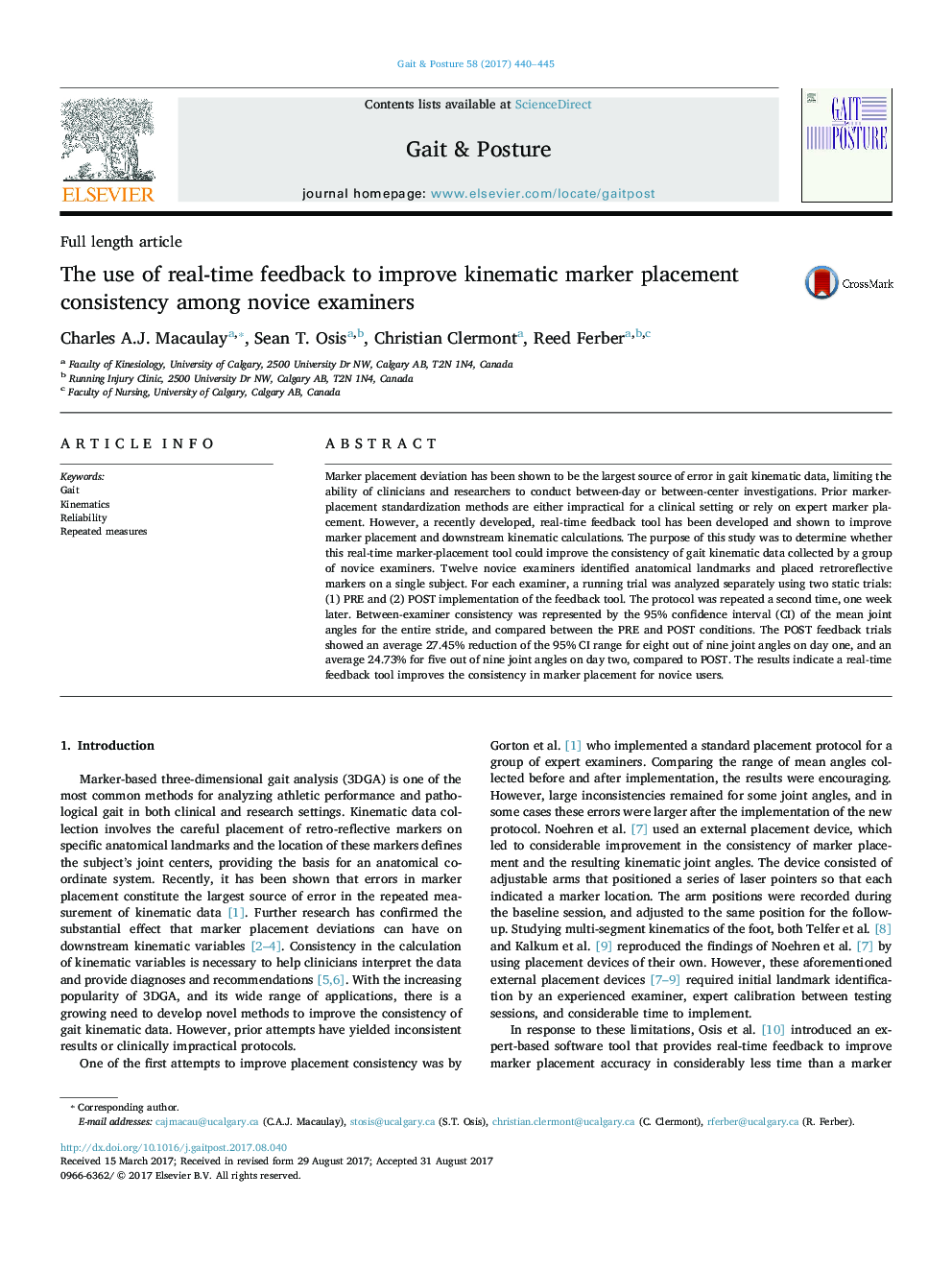| Article ID | Journal | Published Year | Pages | File Type |
|---|---|---|---|---|
| 5707650 | Gait & Posture | 2017 | 6 Pages |
Abstract
Marker placement deviation has been shown to be the largest source of error in gait kinematic data, limiting the ability of clinicians and researchers to conduct between-day or between-center investigations. Prior marker-placement standardization methods are either impractical for a clinical setting or rely on expert marker placement. However, a recently developed, real-time feedback tool has been developed and shown to improve marker placement and downstream kinematic calculations. The purpose of this study was to determine whether this real-time marker-placement tool could improve the consistency of gait kinematic data collected by a group of novice examiners. Twelve novice examiners identified anatomical landmarks and placed retroreflective markers on a single subject. For each examiner, a running trial was analyzed separately using two static trials: (1) PRE and (2) POST implementation of the feedback tool. The protocol was repeated a second time, one week later. Between-examiner consistency was represented by the 95% confidence interval (CI) of the mean joint angles for the entire stride, and compared between the PRE and POST conditions. The POST feedback trials showed an average 27.45% reduction of the 95%Â CI range for eight out of nine joint angles on day one, and an average 24.73% for five out of nine joint angles on day two, compared to POST. The results indicate a real-time feedback tool improves the consistency in marker placement for novice users.
Related Topics
Health Sciences
Medicine and Dentistry
Orthopedics, Sports Medicine and Rehabilitation
Authors
Charles A.J. Macaulay, Sean T. Osis, Christian Clermont, Reed Ferber,
